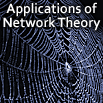Speaker
Prof.
Petter Minnhagen
(Umeå University)
Description
The outcome of a random process is often well described by a
bell-shaped curve, the normal distribution. Some hundred
years ago, it was noticed that things like the richness
among people, town sizes, surnames, and the frequency of
words have different broader distributions. Many, more or
less system-specific, proposals for the deviation from
normal have been suggested under names like "rich gets
richer", "principle of least effort", "preferential
attachment", and "independent proportional growth". Here, it
is argued that the phenomenon is connected to a more
ubiquitous random group formation. A group is like a soccer
team with positions to fill. You want the right player in
the right position. Thus, unlike for the normal distribution
where you pick a player for the team, you now try to pick a
player for a position in the team. Information theory is
used to find the most likely distribution of group sizes
given the number of objects, groups and the number of
objects in the largest group. The agreement between data and
predictions speaks for itself. We suggest that this gives a
new starting point for the understanding of Zipf-type
phenomena and fat-tailed distributions in general.

